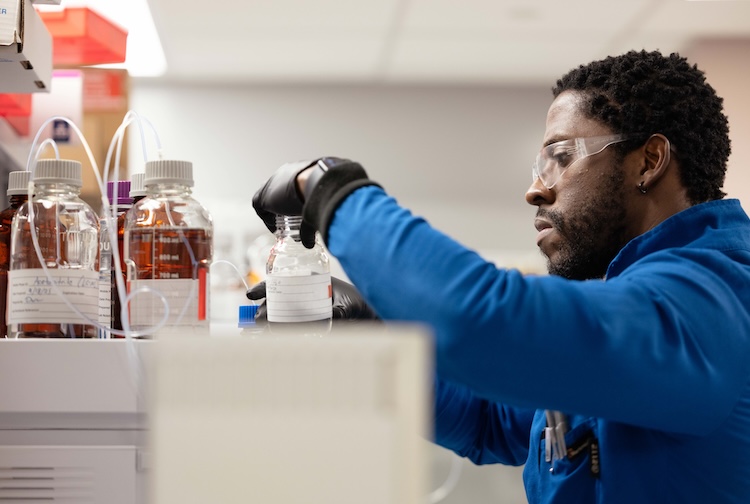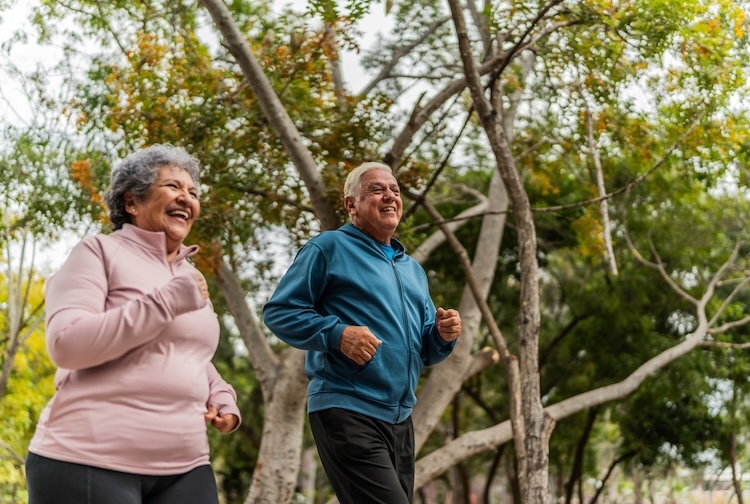Study looks at new means of attaching artificial limbs
July 28, 2020
Technology would benefit those who can't wear them
Amputation is an unfortunate occurrence for increasing numbers of individuals around the world. Causes range from diabetes, cancer and birth defects to physical traumas, such as automobile accidents and wartime injuries. In fact, the U.S. Department of Veterans Affairs reports that more than 95,000 veterans with amputations came in for services over the past fiscal year, and that 10,000 amputations are performed annually.
Artificial arms and legs (prostheses) help many people overcome the limitations imposed by amputation. Attaching the prosthesis has traditionally involved fitting a socket-like prosthetic device over the remaining portion of the affected limb (the “residual” limb).
Although this works for many, for some — especially those with too little residual limb — the prosthetic simply won't fit. For others, complications render the device uncomfortable or too painful to wear, or produce a stride, for legs, that's unnatural or ineffective.
Now, a VCU researcher, Joseph Webster, M.D., a professor in VCU School of Medicine's department of physical medicine and rehabilitation, is leading a study on a new means of attaching prostheses for above-knee amputations. Called percutaneous osseointegrated prosthesis (POP), the technology attaches the prosthetic device directly to the bone using a skeletal implant.
Procedure could help more people benefit from prostheses
Webster is part of a team of researchers from the Department of Veterans Affairs and the University of Utah who are conducting this study. As co-principal investigator, Webster will lead the Richmond-based research team, a collaborative effort between the Central Virginia VA Health Care System and VCU Center for Rehabilitative Science and Engineering.
“For an artificial limb to be effective, it has to fit well on the individual, and the individual has to be able to wear it,” Webster said. “The socket can create pain and the skin can break down. The area can also have excessive sweating. This new way of attachment to the skeleton can prevent or eliminate those typical problems.”
Surgery for the new POP procedure occurs in two stages. The first is similar to what occurs in total knee or hip replacement, whereby the surgeon places the implant inside the bone and soft tissue. The second stage involves attaching the prosthetic device to the part of the implant protruding from the body.
“That's the piece that is unique,” Webster said. “It's a procedure that hasn't been done in the U.S., so it's considered experimental. It has been done in European countries and Australia.”
Results are encouraging
Research studies from outside the United States show the technology allows people with amputations to walk better, with improved range of motion, and reduces the risk of socket-related complications.
“The main side effect is the risk of infection, because the implant does go through skin,” Webster said. “However, there have been advances that have reduced the risk of infection. Our study is being done to test that and make sure the device is safe and effective and has benefits for amputees.”
Infection has been a long-time concern in POP research, but Webster is optimistic. “We have completed a feasibility study where there were no infections that required removal of the bone implant,” Webster said. “That is very promising.”
Local study focuses on veterans
Webster's study will enroll about 150 veterans, with the first POP surgeries completed in 2021. Once the device is determined safe and effective, FDA approval would come next.
“Then it would not be considered experimental, and it can be available to others outside of the research study,” Webster said. “We do think this technology will be beneficial for a wide variety of individuals.”
Mental health benefits, too
Opening up the world of prosthetics to the many individuals unable to wear them will not only provide relief in terms of increased mobility, but improve mental health, as well.
“I believe this technology does hold strong benefits for people with amputations,” Webster said. “It's exciting to provide it to a larger population. It will have an impact on their mental health and whatever role they want to pursue.”
“This procedure stands to make an enormous impact on the quality of life of those facing the unfortunate effects of lower-limb amputations,” said Peter Buckley, M.D., interim CEO of VCU Health System and interim senior vice president of VCU Health Sciences. “We are proud to bring this study — conducted by a world-class team of researchers and clinicians — to the U.S. for the first time.”
VCU Health offers rehabilitation services
To learn more about VCU Health rehabilitation services for people with amputations, please visit our department of physical medicine and rehabilitation.



.jpg)
